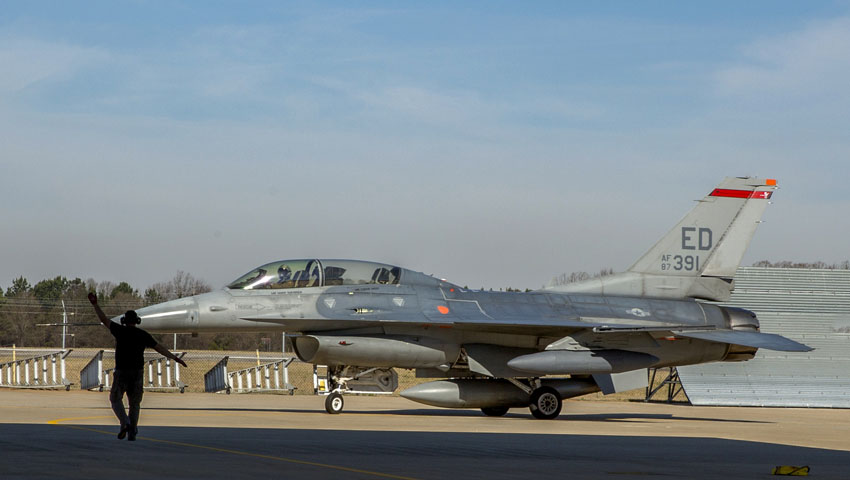Lockheed Martin has confirmed the delivery of its first F-16 jet to the US Air Force as part of the company’s US$900 million F-16 Sustainment Depot program signed in 2020.
In 2020, Lockheed Martin was selected by the US Air Force to oversee the US$900 million indefinite delivery/indefinite quantity (IDIQ) contract for the F-16 Sustainment Depot program, receiving the first aircraft received for maintenance at the company's South Carolina facility early 2021.
As part of the agreement, Lockheed Martin has agreed to provide full lifecycle support to the jet, including development, production and sustainment support. To achieve this, the company has sought to hire an additional 300 employees to fulfil the contract's deliverables.
“This was the first fighter sustainment work awarded to the site, and with F-16 production also well underway in Greenville, the site is now the global home of the F-16,” Danya Trent, Lockheed Martin vice president, F-16 Program said.
The F-16 milestone came as Lockheed Martin was selected by the Egyptian Air Force to upgrade the sensors on board the country's Apache fleet.
It is expected that the modernisation project between the Egyptian Air Force and Lockheed Martin would include the integration of the company’s Gen III Target Acquisition Designation Sight/Pilot Night Vision Sensor (Gen III TADS/PNVS) as well as the Gen III Day Sensor Assembly (Gen III DSA). Currently, the order sees the company provide upgraded sensor kits for the Apache, which upgrade Egypt's D-model Apaches to E-models.
The agreement forms part of an indefinite-delivery/indefinite-quantity (ID/IQ) contract with the US Army, which serves as the contract to provide the DSA and TADS/PNVS equipment and services.
"Lockheed Martin is committed to a strong and sustained partnership with our customers in the United States and around the world," Tom Eldredge, director of Lockheed Martin's missiles and fire control rotary wing sensors program, said.
"This contract enables us to respond rapidly to Egypt’s emerging defence needs, including requirements for new sensor systems and upgrades."
According to a release from the company, the Gen III TADS/PNVS (dubbed "eyes of the Apache") enables pilots to undertake long-range, precision engagement and pilotage capabilities across different weather scenarios and daylight hours. Meanwhile, the Gen III DSA increased the TADS/PNVS capabilities, enabling the model to fully accommodate weapons released into the future.
To achieve this, the pilot is presented with high-resolution, high-definition, near-infrared and colour imagery on the Apache’s cockpit.
“Gen III DSA also provides a new laser pointer marker that improves coordination with ground troops, and an updated multi-mode laser with eye-safe range designation that supports flight in urban environments and critical training exercises,” the company confirmed.
The work is scheduled to take place until July 2024 at the Boeing Apache Helicopter Plant in Mesa, Arizona.








